Interview
October 24th, 2024. 17:00 hrs (GMT+1), Vienna, Austria.
After a regular job day, seemingly like any other, this time I was having my first interview with Hector Ojea, lead singer and guitarist of Battosai. Which, by the moment I’m publishing this, it’s almost a month since the release of their second album “Lágrimas y Milagros” (Tears and Miracles), you can read my review here.
Hi! … First of all, how are you? I imagine you are excited about the release of “Lágrimas y Milagros“ (Tears and Miracles) next week.
Hector: Yes, there are 7 days left, it’s only a week. And the vinyls have just arrived now, so that’s great.
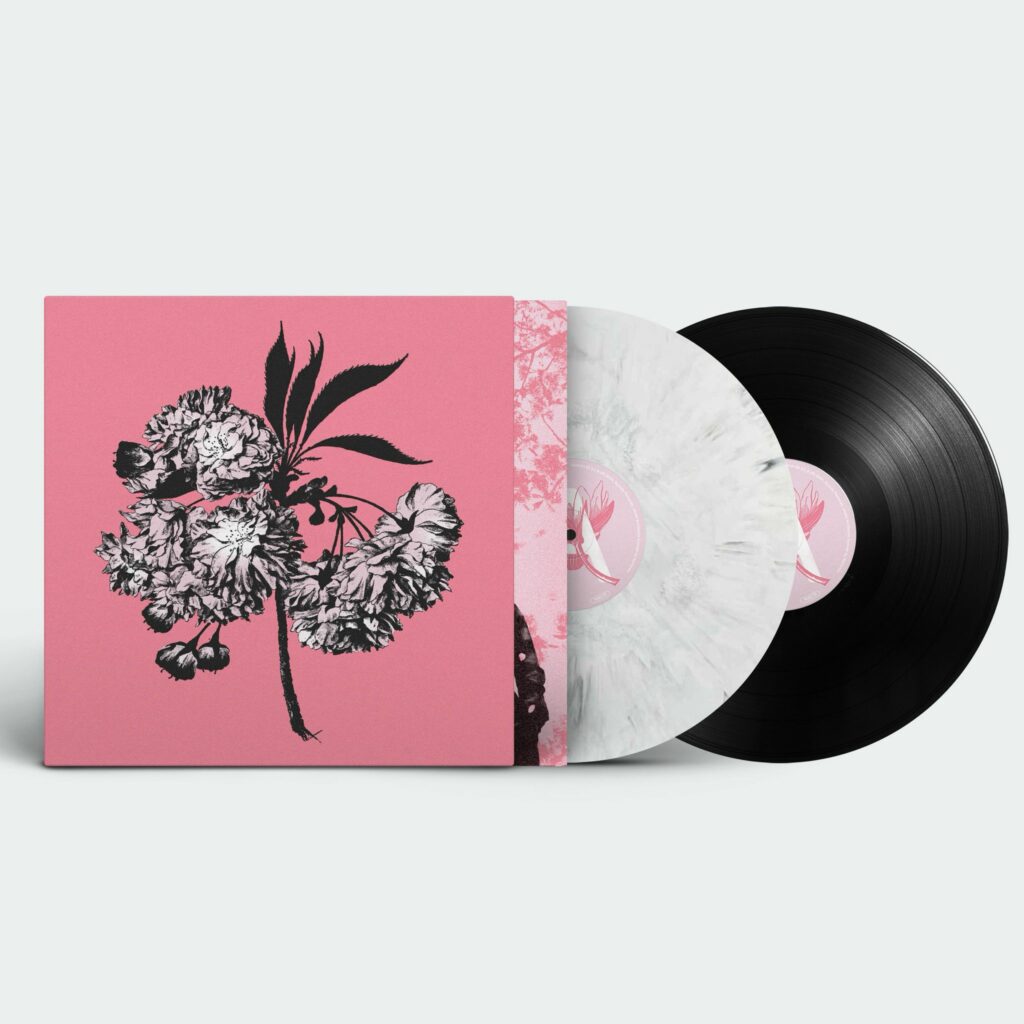
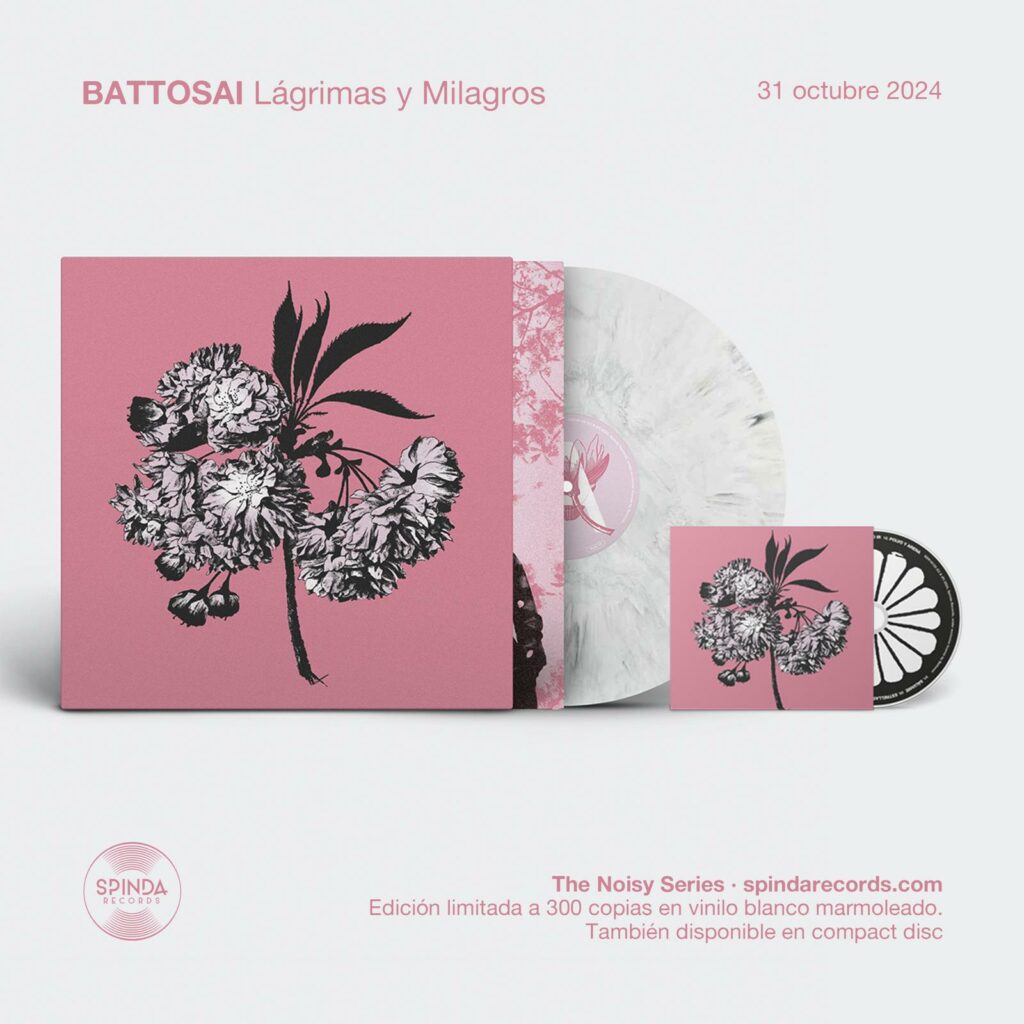
I noticed that you have an acoustic showcase on the day of the release. What an interesting way to present your new album, particularly for this genre so full of guitars and powerful drum and bass beats.
H: It was a bit because near where we live, we have a friend who has a place/bar where he does concerts, what happens is that they are focused mainly on heavy music, and we liked to do something there because in the end all our friends are here and he suggested us to do something like this and such. And we never did something like that, well we would have to try it and one day I picked up the guitar to try it and I said – wow! It is true that to compose there were already some songs, not all, that the germ of the main idea was a guitar and a voice and then everything is added. Maybe it is not so complicated to adapt certain songs to this style.-. So we tried it a bit in the rehearsal room, we were convinced by the idea and we said -The idea is cool, plus it is a bit of a challenge and it is okay-.
And you’re not stopping from there. I think you have gigs already planned for next year.
H: Yes, then we have more or less one per month, approx. The truth is that we are very happy, and we continue showing things that at the moment, I don’t know by heart but there must be about 10 or more dates announced, and there will be more.

That’s cool, a great start to the album launch. And anyway, talking about the new album, “Lágrimas y Milagros“.
How do you think your sound has changed compared to the previous album? From a more grunge-like first album to this one (more on the notes of punk rock – emo from the first decade of the 2000s)
H: I think it changed in the way that I experienced it as a perhaps more cohesive process. Because let’s say that the first album, as it was the debut, in the end, there was perhaps not a project like this of “let’s have an album” but rather it was more of an “okay, we are a group that has just started, we have these songs and we put them all on an album” thing. In other words, it was more of a kind of compilation album of the first songs that we were making. … And it was more, not varied without style but let’s say that it was not so well thought out.
And this one was a more limited process, like “Okay, let’s make an album.” We got together more or less a year ago, with some gigs and the composition took about 4-5 months, it was no more. And everything was more integrated and clearer, you can hear a bit of the music that we listened to more at that time. So, for me the biggest change above all was that cohesion of saying, although it is not a conceptual album, it is like all the songs are more cohesive with each other in terms of musical style, there is not so much variety.
Yes, I could tell, as if it had a common thread. But it made more sense to me as a well-framed album.
H: Yes, definitely.
And so, once again, Santi Garcia from No More Lies produces your album, do you think that has influenced the punk rock tendency of the new album? Or how is that interaction with the producer?
H: In general, I think it’s a bit of both. On the one hand, we had already chosen it for both the first and the second because we liked the work he did. Well, let’s say that we were already looking for that sound because, for the thing we do, we thought it was the right thing, right? The ideal thing. And it is true that although we take everything quite settled to the studio, that is in the sense of structures, the arrangements are more or less settled, although maybe there can be some suggestions.
On the first album, there were 4 little things, on this one there are also some little details, an arpeggio or something like that, but in general we tend to bring everything pretty closed. So, let’s say that Santi influences us above all by creating a good atmosphere to be able to record, which in the end is super important, and also because he understands quite well the thing we do, and let’s say that it’s like we don’t have to explain much of what we’re doing. It’s like “music with strong guitars, with strong drums, everything loud!” and he understands it perfectly, he has it clear, it’s not like what happened to me with other bands where you were going to record, and it was like “the guitars have to be louder and this”. And he already has it super understood, so it’s super easy.
Of course, I also think it’s a very good choice because if anyone was going to know how this should sound, it was Santi. A very good choice, very natural, I would say.
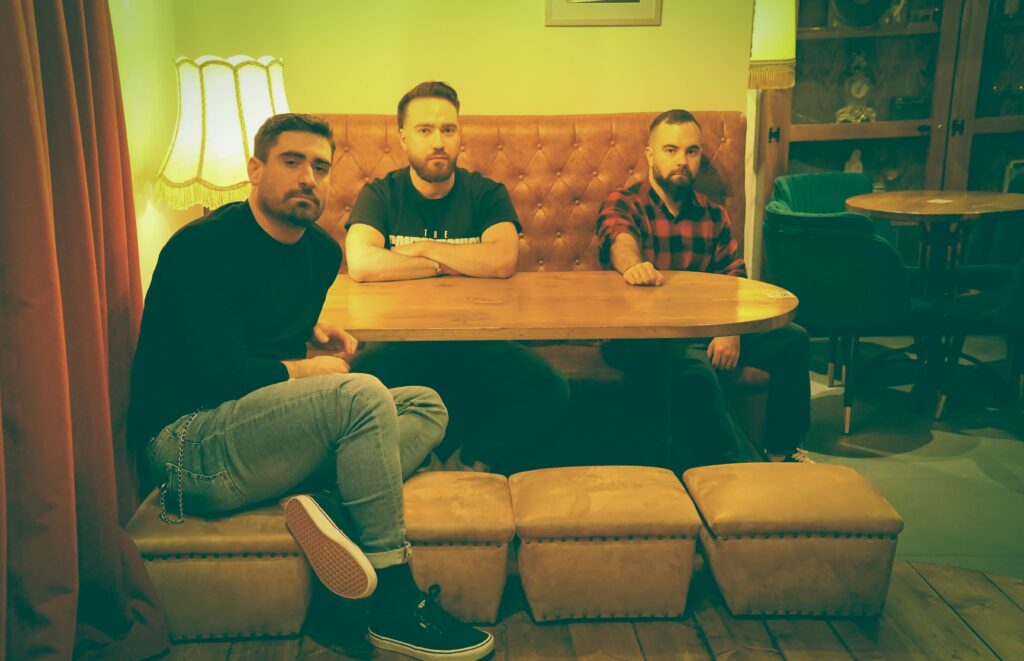
And going back to the concept, well, you already said that it’s not a conceptual album. I did notice something lyrically speaking, I could see a more introspective, dark approach. How do you define this work? What motivated you to write these lyrics? Because I did notice a very emotional thread, not to say “emo” clearly, but you know what I mean.
H: Yes, totally, it’s what you just said. Even though it’s not conceptual, it’s true that the time frame for composition was very short, and it’s true that the lyrics are very interrelated. In the end, it’s exactly what you said, it’s darker, more visceral, and the lyrics are totally introspective. It’s not that they talk about anything in particular or any specific situations, but it’s more like feelings, about how I was at that time when I was writing the lyrics and all that. And it was a bit due to what, well, on a personal level I was living during that time in terms of family issues, relationships with colleagues, and things like that. So, it all has a kind of pessimistic aura, but well, it was quite natural, it wasn’t sought, it was just throwing out what there was. Like vomiting on a sheet of paper what there was and that’s it.
Yes, I understand, vomiting emotions, the heart, or something in words, for example. I think that is the work that any creative does.
And for example, how is the composition between you 3. Do you write all the lyrics? Or suddenly, I don’t know, does the rest of the band bring something of their own?, how does it work for you?
H: Well, in the process, I’m the one who more or less brings the ideas. Sometimes I bring them finished, sometimes they’re missing a part. But let’s say that they usually come from a plan that I bring. It can be a song with lyrics, or it can be just the music, or it can be the finished song directly. So, in the end, what we do is that in the rehearsal we give it shape, we all start to play around and maybe if the song is already done, we’ll all play it and see what happens, or if maybe it’s missing a part, we try to find a way to close the song altogether. But let’s say that from the beginning I bring the idea.
Yeah, okay, I figured.
Well, let’s talk about the album artwork. The album and singles artwork are really cool, I see the anime influences, just like the name suggests. Like this Japanese art. Tell me, who did the artwork? How did you find the artist? How was the discussion? Did you already have an idea for the artwork or was it more like “ok, I’ve picked you, do your thing”?
H: Yes, it’s really cool. We’re super happy with the design. The design was done by Miguel Duarte, who, well, had already done some things with us before. He had never made an album, but he had done designs for t-shirts, mostly. He has made all of Battosai‘s t-shirts. And let’s say that he always understood the concept of the band’s art. There was no need to explain much to him either, it’s like with Santi Garcia, there weren’t many things that had to be explained to him. … He was also participating in the pre-production process, so let’s say that he was kind of involved too. So I already knew what it was about, and the only premise we put in was a couple of concepts, right?, like trying to transmit that visceral, emotionality and above all the concept of impermanence that the album has a lot of and with all that to create an image, also leaning towards the Japanese aesthetic that is a “trademark of the house”, taking advantage of that which we like and such. And so, he brought the proposals, and this was the one that he and we liked the most, and then it is also true that he wanted to escape a little from the dark design of the first album, which was a photo with a black background and such. So, I told him, well, if we can escape a little from dark colors, better. You know, I like to give it a contrast. So, he thought about it, and it was a bit like this idea of the cherry blossom, the pink, and all this story.

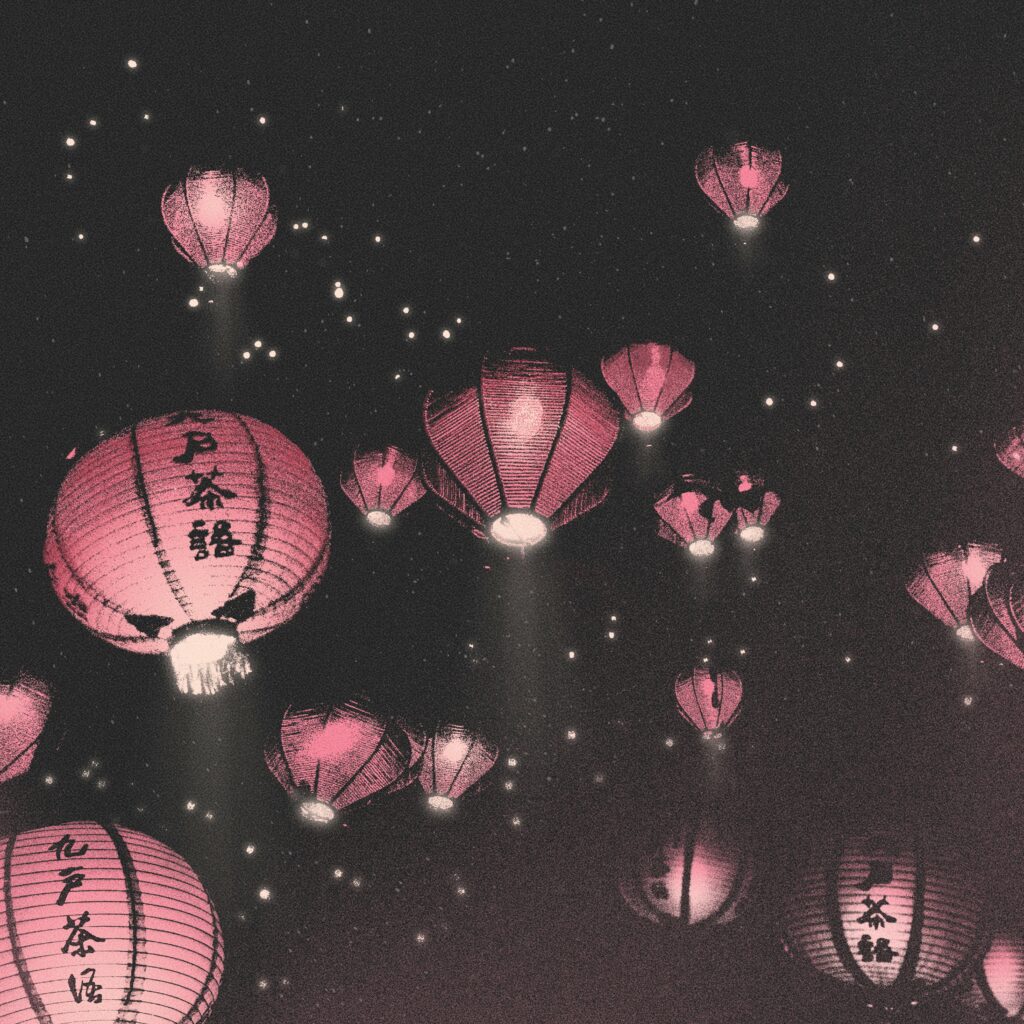
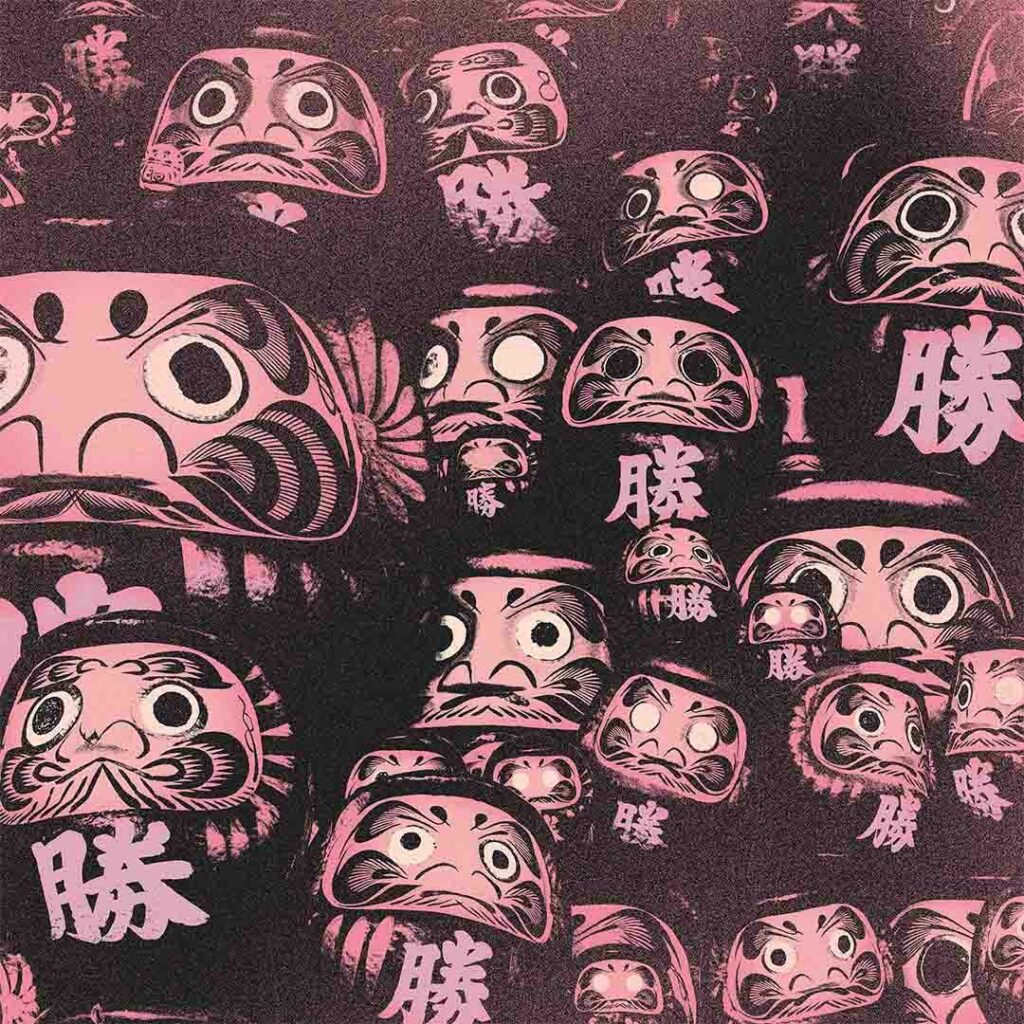
Yeah, great, it’s really cool, right? At least from what you’ve told me, the whole process of the album, putting it together, recording it, producing it, the art. Everything has been like “We didn’t have to explain much, it’s there.” In other words, the process is very natural and very organic, and that’s really cool.
H: Yes, especially over the years, I’ve learned, or at least it works for me, that many times the most difficult thing is choosing people. Because many times you choose a person who, you know, doesn’t understand what you want to say, and that’s when problems arise, but we’re more of the “okay, we choose people who we know we like the way they work, and then we let them do it” kind of thing. We’re also not people who are super on top of things like “because I want this thing and if this thing isn’t, then it won’t work” kind of thing. It was like, look, it could be more or less this way, and that’s it.
Awesome. Changing a bit of topic, tell me. What is the grunge/punk rock scene like in your region/or in Spain? I know a couple of Spaniard bands, but I would like you to tell us from your perspective, how is the scene or the movement there?
H: Well, we are from a region of Spain called Galicia, in the northwest of Spain. And so, well, in Galicia, let’s say that the alternative rock scene and such, there aren’t many bands either, here tends to be more of other styles. Guitar music isn’t as popular as what is there, it’s almost of a different vibe and tends to be more playful, more punk, garage, more in that vein, more relaxed, and even so, we all know each other and we coincide, but let’s say that there are very few alternative bands, for example, we have Turbo Kraks, Menta, well, there are groups. But well, compared to other styles there are very few. And then in Spain, there are a few more, it’s not crazy either, but there are groups. On the previous tour we played with a couple of bands that are really cool, one is from Barcelona called Gyoza, like the food, Ella la Rabia, they are from the Canary Islands but they live in Madrid, which is really cool. And there are more bands in Spain. Yes, there is a small scene. Above all, right now there is a lot of emo, Midwest emo in Spanish, it’s been very popular lately, bands like Comic Sans, like Bernal. There are several, and well, it’s a very interesting time, obviously, it doesn’t attract a large audience, but it has its niche.
And well, you do it for the love of art, right? I mean, obviously, if it sells a lot, it would be incredible. But well, you do it because you like this genre, right? That’s what you like to do. And I was just going to ask you, what other bands accompany you? But you already answered jaja.
By the way, we recently had a festival in Vienna that brings music from all corners of Europe, there were even 3 Spanish bands lined up brought by “ The Spanish Wave”.
Do you have any plans to tour outside of Spain and expand your horizons perhaps to non-Spanish speaking countries?
H: Yes, they have several calls. Let’s see if we have a chance to write there and see if they choose us for one.
Exactly. I mentioned them because I think they have this invitation to the Waves festival every year because it would be amazing to see you here. And yes, if you do have any plans to tour outside of Spain and expand your horizons, perhaps to non-Spanish speaking countries and communicate through music. I don’t know, if you have any plans for the short/medium term, that’s an option.
H: Yes, on the first tour we were about to go to France and such, but it didn’t work out, I don’t remember why it happened. But yes, above all leaning more towards when the tour is more advanced. … Because in the end, it is easier to manage, we already have the contacts, the expenses measured, and all that. And well that way we are making a little money, right? To continue and all that. But yes, the idea has been talked about many times. We would like to leave Spain, crossing the pond would be incredible, and well, through Europe too, of course. And we are going to try it, to see if it is possible.
I hope so, I feel like you would be very popular in Mexico. Listening to you reminded me of many bands that I have always listened to since it is a genre that I have liked since I was very young. I don’t know if you know Thermo or Hummersqueal.
H: Damn, no, but I’ll listen to them.
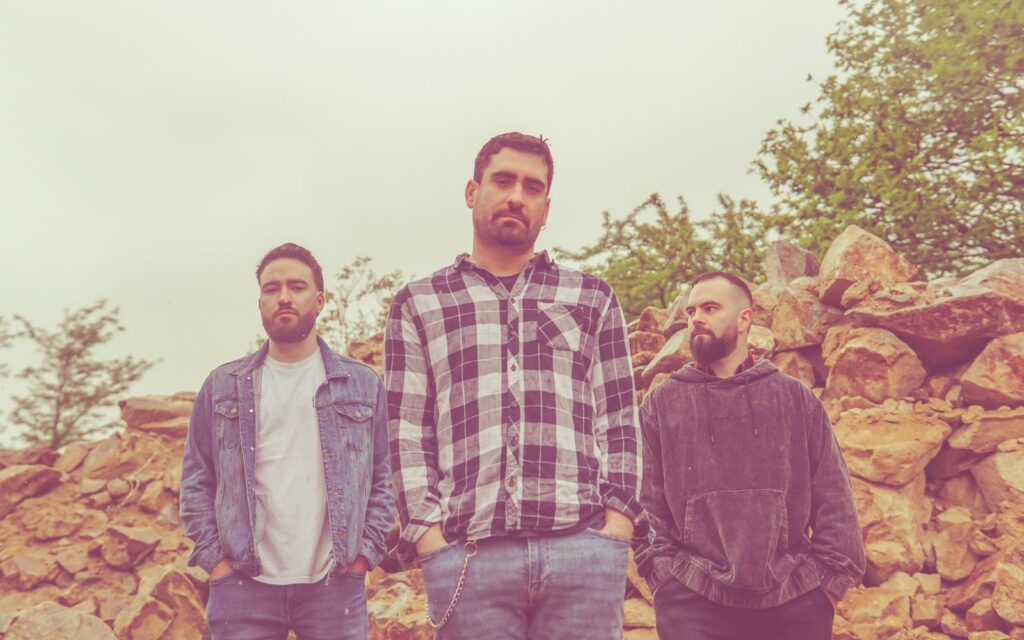
And finally, something I liked the most when I read interviews or reviews of bands when I was younger, was reading about the recommendations of the band they were reviewing, so …
What bands inspired this album?
H: Well, on this album, I listened to a lot of Darkcharge, a band from the US, who play a kind of hardcore, a weird thing but it’s like the Pixies playing hardcore. The guitars and harmonies are pretty happy, but the other stuff is a bit rougher, so it’s pretty cool. I listened to that a lot. Then there are a lot of bands, I don’t know if you know a festival in England called Outbreak, which brings a lot of emo, hardcore bands and such. I listened to a lot of those bands in that style, I listen to Basement a lot, for example. And well bands in that style, like alternative rock, but with emo, which in the end is all so diluted that you don’t even know what style it is, but well, that vibe a bit, especially in the making of the album.
Sure, it shows. And now, for example, what bands have you been listening to? What was the last thing you said – Damn! This is cool!-, what did you hear for example this morning? Or yesterday afternoon?
H: Touché Amoré‘s new album. Which they released back there, I really liked. And then also, the latest from One Step Closer, which I also really liked. And a bit of that vibe. Then also, although it may not seem like it, it’s like that music has a very emotional, very hard charge. So I kind of alternate it with music styles that have nothing to do with what I do, like for example Soul, or Funk. I really like that vibe of well, I don’t know, an infinite loop, like if I’m cooking, I put on James Brown to get away from the emotionality a bit, something more festive that takes me away from it.
Yes, absolutely, sometimes you just need to, I don’t know, disconnect your brain, get out of the loop for a bit, and also, why not, a more “savory” rhythm, also super welcome.
H: Yes, of course.
Well, it was a great time talking to you, Hector. It was a pleasure meeting you. And I also wanted to give a big shoutout to Berto from Spinda Records because he put us in contact and the work he does to promote bands is really cool.
H: Yes, the same. We are also very grateful to him because when a group starts it is very complicated to have support of any kind and he has always given us a hand since we started, he believed in the project, and we have already released two albums with him. I hope the third one comes out too, for the years that we can continue working together and, what can I say, it is very difficult sometimes to find someone who vibrates with what you vibrate, and who bets on what you bet on, and the truth is that we are very happy.
Great, and taking up a little of the time we have left, how was this contact with Berto? That is, did he write to you? Or did you look for him?
H: Well, we were in the middle of releasing our first album, and I was sending emails like crazy to labels, and the only one I didn’t send anything to was Berto. I hadn’t sent anything to him.
No way! Really?
H: Yes, because I didn’t know him at that time, and he heard us on a podcast from a media outlet here in Galicia called Solofolar, and they played one of our songs and he liked it, and then he contacted us, and said – hey, are you releasing an album? Yes, with whom? With someone?- And we were like – well, no – and we passed it on to him, he liked it, and so from that time on we started working together.
Oh well, it was like destiny, right? He was the only one you didn’t send an email to, and he was the one who told you – hey, this is cool-. In this case, more than choosing the right person, you were the ones he chose, right? The right band for him and his label.
That’s cool, and of course, you already mentioned it, right? That you have plans to continue with Spinda.
H: Yes, of course, especially what I was telling you before, the human team when you are clear that we all have the same ideas and such, it is very easy to work. Sometimes the difficult thing is to fight with people, to make them understand how you want things and, in the end, as I told you, with Miguel, with Santi or with Berto, we are very happy because they understand very well what we do and what we want to do.
Great, well yes, if we can draw any conclusions from this conversation, it is that the team is very important, as is choosing the right people who understand you, who basically all vibrate on the same wavelength.
Well, congratulations on the new album. You can read my review now, and spoiler alert: I think, it’s really cool. And I hope to see you here soon.
H: Very well. Thank you, a pleasure. See you later.
